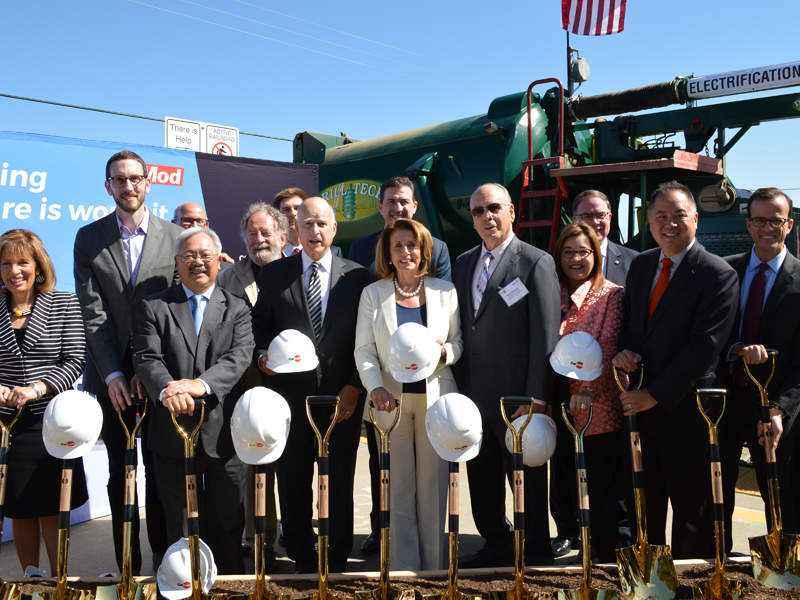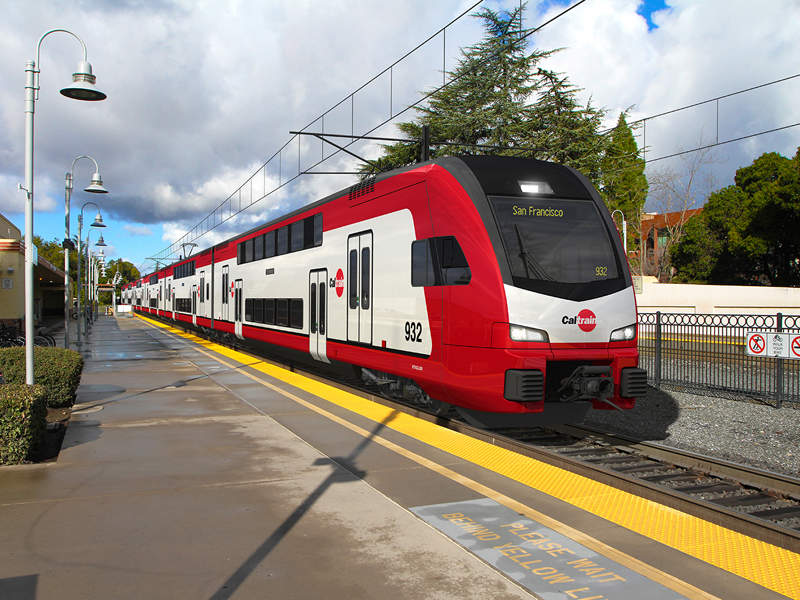The Peninsula Corridor Electrification Project (PCEP) involves the electrification of approximately 82km of track between the Fourth and King Street Station in San Francisco and the Tamien Caltrain Station in San Jose.
The Peninsula Corridor Joint Powers Board (PCJPB) is implementing the project. It owns and operates the Caltrain commuter rail service.
The PCEP forms part of the Caltrain Modernization (CalMod) programme, which also includes the installation of CBOSS PTC advanced signalling system across the Caltrain corridor and replacement of Caltrain diesel train fleet with electric trains.
Estimated to cost $1.9bn, the project is being funded through federal, state, regional and local funds.
The ground-breaking ceremony of the electrification project was held in July 2017, with construction scheduled for completion in 2022.
Peninsula Corridor Electrification Project (PCEP) details
Caltrain currently carries 65,000 users a day between San Francisco and San Jose using its diesel trains.
The need for the electrification of Caltrain commuter rail was identified in 1999 and the project received environmental clearance in January 2015. The project aims to improve operational efficiency of the existing commuter rail service.
It involves tracing underground utilities, soil condition testing, inspection of signal/communication equipment, pruning or removing trees, and installing foundations required for the operation of the overhead catenary system (OCS), which provides power for the new electric trains.
The 25kV AC OCS will serve as the power source for the electric trains and will be powered by two traction power substations, one switching substation and seven paralleling substations.
PCEP construction
Foundations and poles will be installed using cranes and off-track equipment, upon the completion of soil testing. Wire stringing will then be performed using on-track equipment.
The project will also involve the installation of ten substations with the construction of each substation taking up to 12 months to complete. Bridges along the route will be installed with a protective barrier and a screen system above the electrified lines.
Rolling stock on the electrified Peninsula corridor
Electric trains will replace the existing diesel locomotive trains, following the corridor electrification. Caltrain will deploy the Stadler KISS double-decker electric multiple-unit (EMU) trains on the lane to improve speed, capacity, safety and comfort.
The KISS trains will offer reduced engine noise and provide ample space for passengers. The vehicles can operate at a maximum speed of 177km/h.
The new passenger cars will have two main levels and between 85 and 100 seats in each car. Each EMU will also feature location and destination information systems, flip seats and a bathroom.
Each car will feature a lower, mid and upper level. Dedicated bike storage will be featured on the lower level, which will be installed with security cameras.
The train are scheduled to be delivered starting from August 2019 and will undergo testing on the Caltrain corridor before commissioning in 2020.
Benefits of the electrification project
The electric trains will improve the service and capacity by more than 30%. The vehicles will reduce the cost of fuel, resulting in increased fare revenue. Noise and air pollution from the electric trains will be significantly lesser compared to diesel-powered trains.
The electrification project will also create approximately 9,600 direct and indirect jobs for locals.
Contractors involved
A $697m contract for the electrification works of the Caltrain corridor was awarded to Balfour Beatty in August 2016.
PGH Wong Engineering and STV are responsible for providing design services to Balfour Beatty for the electrification project.
Stadler was contracted to design and manufacture 16 six-car KISS double-decker electric multiple-unit trains for Caltrain in August 2016. The $551m contract also includes an option for 96 additional cars.










